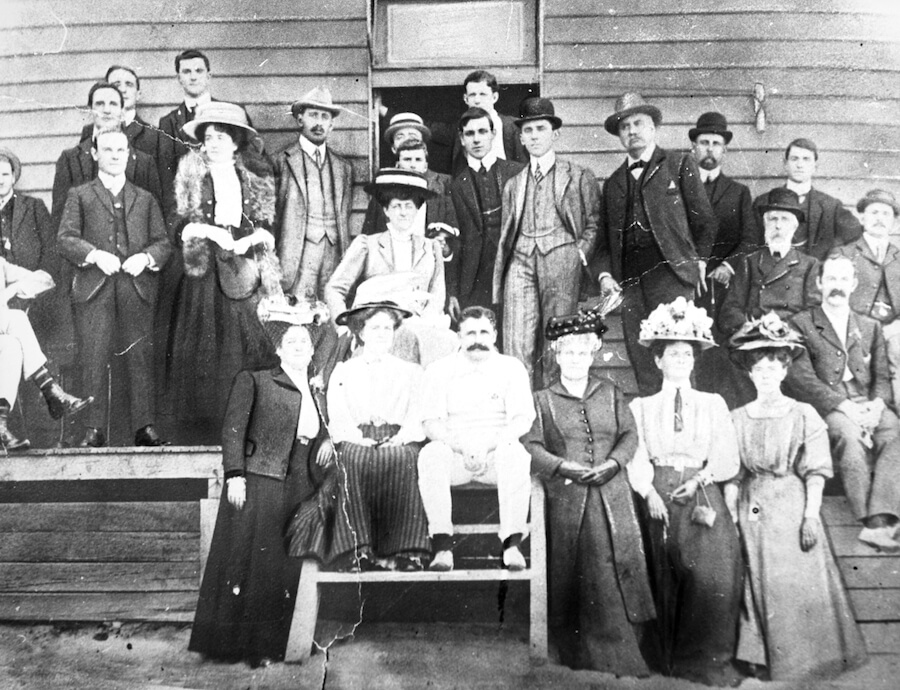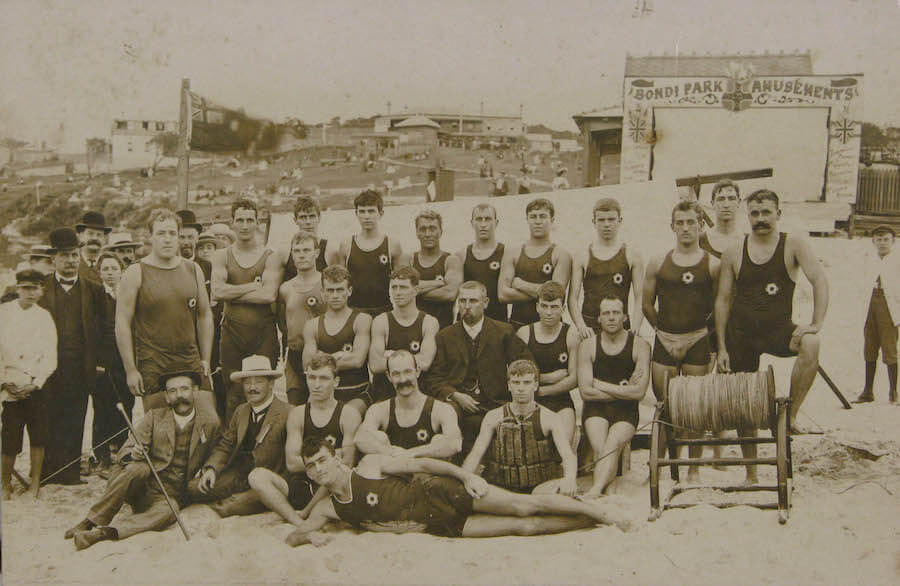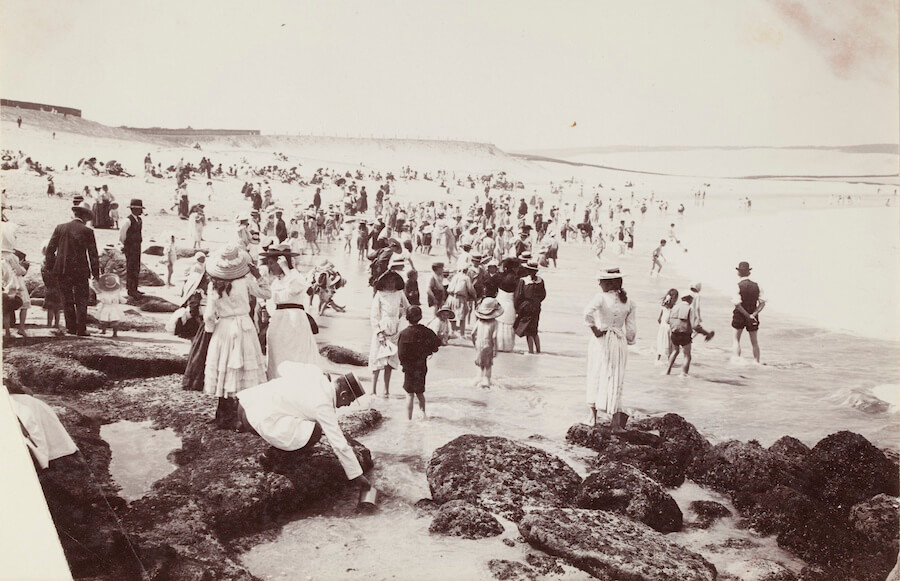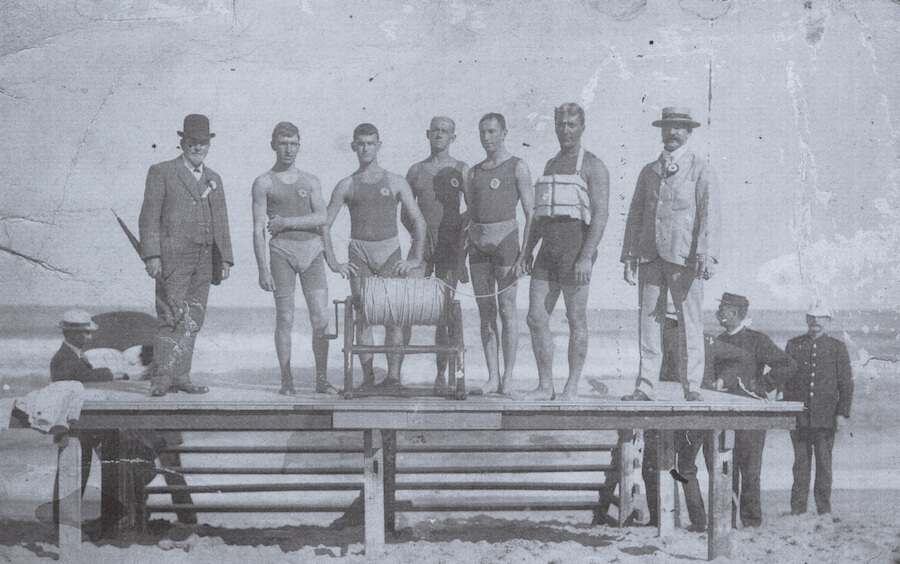Location
Queen Elizabeth Drive, Bondi Beach NSW 2026
The Sydney Coast is on land traditionally occupied by the Bidjigal, Birrabirragal and Gadigal people.
Accessibility
Wheelchair accessible
About Bondi Surf Bathers Life Saving Club
In February 1907, the Bondi Surf Bathers Life Saving Club became Australia’s first recorded surf lifesaving club. The founding members established the club with the central aim of ‘the rescue of the distressed’ in recognition that sea bathing was a danger for those who weren’t used to swimming at Sydney’s beaches.
Other clubs then began to form nearby, leading to the establishment of the Surf Bathing Association of New South Wales (now Surf Life Saving NSW). These clubs spread nationwide, solidifying surf lifesavers as an iconic symbol of Australia.
The Bondi Surf Bathers Life Saving Club remains in operation to this day, rescuing over 12,000 swimmers and surfers every year.

The official opening of the Bondi Surf Bathers Life Saving Clubhouse at Bondi Beach, 2 November 1907
Swimming's popularity (and danger) grows
Despite bans (on the grounds of decency) on bathing in daylight hours in Australia, by the 1890s open-water swimming was an increasingly common pastime in Sydney. As bans were repealed and the numbers of ocean bathers increased, so did the frequency of drownings. Even strong swimmers had difficulty negotiating unfamiliar rip currents and the ever-changing surf conditions.
Australians had embraced the ocean as a place of recreation, but the dangers of the surf, and the need for lifeguards, became increasingly apparent.
The genesis of the reel and line
In 1906, future Bondi Surf Club members John Bond, Percy Flynn and Lyster Ormsby were already saving distressed swimmers. The trio played pivotal roles in inventing the surf line and belt (later reel and line). Originally called the alarm line, this invention was used to bring a person in difficulty back to the shore. A belt was worn around the lifesaver's waist, and this was connected to a line that was wound around a wooden structure held steady on the beach by other lifesavers.
The reel and line was in use at Bondi by December 1906 and was soon employed at rapidly forming lifesaving clubs around Australia and overseas.
The first surf lifesaving club
It was at a meeting at the Royal Hotel in Bondi Junction on 21 February 1907 that the Bondi Surf Bathers Life Saving Club was formed. The 23 men who attended were the pioneers and founding members of the club. In March, the club held an ‘exhibition on the beach of handling the life-lines and restoring the apparently drowned’ in front of hundreds of people.
The club's development
Experiencing rapid growth, the club had 64 members by 1910, who were said to be part of 'one of the happiest bodies in Sydney'. During this time, club admission involved paying an entry fee, passing surf swimming and rescue work tests, and agreeing to undertake beach duty every weekend.
Improvements were made to the clubhouse to cater for Bondi Beach’s popularity, including new rooms, a rooftop sunbaking area and an enclosed walled saltwater swimming pool.
Community service
Notable at Bondi and throughout Australia is that surf lifesavers are volunteers, dedicating their weekends to patrolling beaches and keeping people safe. This commitment was demonstrated on 6 February 1938, when hundreds were washed out to sea after a backwash swept away a sandbank. Bondi lifesavers sprang into action, using the surf line and belt as well as other flotation devices to rescue those swept out.
Known today as 'Black Sunday' and the largest mass surf rescue in Australia's history, the event saw the rescue of approximately 250 individuals, with 60 retrieved unconscious and 5 casualties.
Inspiring a movement
Surf lifesaving clubs developed right across Australia based on the Bondi model, including in Tweed Heads and Coolangatta in Queensland (1909), Western Australia (1909), Victoria (1913), Tasmania (1921) and South Australia (1925).
With 314 surf lifesaving clubs in Australia and over 190,000 members, Bondi Surf Bathers Life Saving Club has created an enduring legacy of volunteers keeping locals and visitors safe.
References
- Bede MC (1949) Surf: Australians against the Sea, Angus and Robertson, Sydney.
- Bondi Surf Bathers Life Saving Club (n.d.) History, Bondi Surf Bathers Life Saving Club website, accessed 5 June 2025.
- Brawley S (2007) The Bondi lifesaver: a history of an Australian icon, ABC Books in conjunction with the Australian Broadcasting Corporation, Sydney.
- National Museum of Australia (n.d.) The birth of surf lifesaving, National Museum of Australia website, accessed 5 June 2025.
- National Museum of Australia (2006) Between the flags: 100 years of surf lifesaving, National Museum of Australia Press, Canberra.


